How to Make Money from Short Covering Rallies
Hi guys, welcome to VRD nation. This is the channel that is dedicated to Indian traders and investors, where we explain complex stock market concepts using real-life examples, case studies and real-life trades.
Today we will discuss a very interesting topic and that is how to make money from short-covering rallies.
It is a fascinating subject for me because the way to make money from short-covering rallies is not so much about strategy as it is about human behaviour. So, by identifying how humans behave when trapped in a bad situation, you can take advantage of that situation and make money from it.
Now it may sound a little cruel that somebody is perhaps in a bad situation and you are taking advantage of that. Sounds unethical and immoral. But the reality is that trading is a zero-sum game. So, as we understand it, game theory is that one person’s profit is another person’s loss.
If you made money today, it is because somebody else lost money and if you lost money today, you gave it to somebody else. So don’t feel bad about making money in trading, because that is the nature of the game. Now I want to use a practical, real-life example from today. So today I made over one lakh rupees using the logic, which I’m going to explain step by step in this video.
Whatever I’m going to discuss with you, I am telling you from a real-life experience. So, it’s not just a theoretical concept. It’s a real-life practical experience and so please pay attention to what I have to say to explain this topic of short-covering rallies, how do you make money from it?
What I will do is I will break down this one by one. We will first understand what is shorting? Then we will understand what is short covering and then short-covering rally.
After that, we will understand how do you make money from it? So, we’ll go step by step so that we understand every concept.
First thing first, for those of you who do not know what is shorting, let me explain that. Shorting is a very simple sense is taking advantage of something falling. For example, let’s say you are expecting a stock to fall. Assume that a stock is trading at a hundred rupees and you are expecting the stock to fall to 80 rupees.
If you have identified a setup like this, where you believe that that stock is going to fall, you will sell that stock first at a hundred rupees and you will buy it back at 80 rupees. This is the basic concept of shorting that you sell first and buy later. In this particular case, if you sold first at a hundred rupees and you bought it back at 80 rupees, what will be your profit?
Well, it would be the selling price, which was a hundred rupees minus the buying price, multiplied by the quantity that you sold. This is the core concept of shorting, where you are taking advantage of something falling. Now, if I were to explain that from a real-life perspective, in this particular case, let’s take the stock of Reliance. If you believe that Reliance stock is going to fall, so what you can do is you can sell reliance at 2070.
Shorting and selling the same thing. If we shorted Reliance, when it was at 2070 and you bought it back when it was, let’s say 2000, you benefited from Reliance falling that day. So, this is the concept of shorting and when something falls, you benefit from that.
If you understood what shorting is, you can easily understand what short covering is. So, going back to the same example, you sold something for a hundred rupees. In this case, you sold it at a hundred and bought it back at 80. This act of buying back is called short covering.
When you cover your position, you close your position which you opened when you sold something and hence is called short covering. Now let’s put everything together. So, we talked about what is shorting and short covering.
Now let’s talk about what is a short-covering rally, and this is something so fascinating. So, to understand the short-covering rally, let me take an example of a stock that is falling. 3 people have shorted this stock, including yourself. So, we have person A who shorted the stock here, which means he sold the stock at a hundred rupees. Then you have another person B who sold it at a little higher level at say 120 rupees. Then the 3rd person is you who sold it for 132 rupees. So, all 3 of you had the view that the stock is going to go down.
All 3 of you are making money right now because your view was right. The stock did come down from 130 to 100 rupees and now it is sitting at 90 rupees. So, everything is fine. Everybody’s making money and are happy. Now what happens is that the stock turns around from 90 and let’s say it goes to 100.
So, this person A who was sitting on a profit of 10% in this case sees that all the profit that he or she made, vanished. They went away because the current market price is the same as the selling price. So, the profits are gone and now the stock is slowly inching up.
It goes from 100 to 110 rupees. What then do you think is going on in this person’s mind? Well, this person is feeling scared because all the profits that he or she made are gone now and are at a loss of 10%. So clearly when you see yourself in this kind of situation where your profits are gone and now, you’re in losses, you will feel scared.
When you are scared, what will you do? You will cover your position. So, what will happen at this point is that Person A doesn’t want to be in this position anymore because he doesn’t know how far this stock can go against him.
So, he cuts his position. So, person number A buys back at 110 rupees and, when you buy something, of course, you are adding to the demand. Then the act of buying itself, the act of short-covering itself creates some momentum on the upside.
Now, person A is gone. Now, let’s see what happens to person B who was patient. He saw all the profits from 120 to 90 and the profits vanishing very quickly. Now that the stock has gone from 90 to 110, what will he do?
He has to protect his profits or has to at least make sure that he is not incurring losses. Hence, he will also cover. So, what does it mean to cover the losses? Well, he has to buy again. So eventually it will come down to you. You shorted the stock at 130 and you de a significant amount of money when the stock had fallen to 90. Now all the profits that you made vanished. How would you feel safe? You will feel trapped and want to get out of the position before all your profits vanish. So, if you understood the psychology of all those short-sellers who have shorted a certain stock and how the movement of the price against them,i.e. the bounce-back of the prices that create the psychological scare in the minds of short sellers that they have to get out of their positions before all their profits are gone, that is what fuels a short-covering rally.
I the example that I have taken, I have only taken 3 people, but there are thousands of people who are trapped in their position and when they start to realize that the positions are not going to work out, they are forced to buy and this act of buying itself creates what is called as a short-covering rally. Now that you have understood the concept behind the short-covering daily, let me explain the main topic of this particular video and that is how to identify and make money from the short-covering rally. The key behind making money from short-covering rallies is to find out a setup and a scenario where you can visualize traders who are trapped in and are desperate to get out of their short trades.
Rule number 1
for identifying a shot covering valley is to find a stock or an index, which has been falling significantly. In this particular case, I’m taking the example of Nifty where it has been falling nonstop for 5 days and has lost more than 1000 points and people who have been shorting and have taken short trades and are sitting on profits as of now.
Rule number 2
is to find out the reason for which the market or the stock has been falling. Is that reason still there or is that reason either gone or has it been diluted in its significance? In this case, the reason this market has been coming down is due to the way the yields of the US treasury bonds went up. So, the drastic increase in the treasury yields and some other associated factors created panic in the market and that’s one of the reasons, the market came down.
So, there is no more pressure on the stock or the index to keep going. Going back to this particular example, the way I treated this is I look at the intraday chart of nifty. I’m going to make the intraday chart here and you will see that the market has been falling for 5 days and people were shorting all this time.
Even today, the market opened with a gap down and just kept going down. However, at some point, the market feels it has oversold and it’s time to bounce back. So now you have to visualize the traders who have entered into a short position. Again, remember Persons A, B and you since I took you also a part of this.
So, Person A who shorted this market in the morning at 9:30 realised that this market wants to go up and understands very quickly that he will not be making a profit. He will most likely incur loss and his loss can keep piling up higher. So, he has to buy and now A is gone. Now that A and all those traders who had shorted at 9:15 in the morning realized that their trades are not working out will cover their position by buying.
There are thousands of such traders at this level who will buy. Now the mere act of buying will trigger the market to go up even higher. Now it is the turn of Mr B and he realizes that all the profits that they made in the morning are at risk. He will again buy and now he too is gone.
Only you are left. You short yesterday and until now you were sitting on all these profits. The profits will now start vanishing and hence you have to cut the position right away or all your profits will be gone.
You will also be hence forced to cove your position. So, this is what essentially happens. People when realizing that the short trades are not going to work anymore, they are forced to buy and this mere act of buying keeps moving this market higher and higher.
So, the way I did it is basically I took a long position on the market, but the trade was not that big and I exited a little early, but somewhere around 1 o’clock it became very clear that the market isn’t in a mood to come down. Let’s take a look at the chart of nifty and somewhere around 1 o’clock it became very clear that people who have shorted this market for several days are trapped in their positions and will be forced to cover their short positions in which in turn is going to fuel the rally.
Hence, I took a long position here and from that point, I took a long position. The market went up 200 points and by identifying the psychology of traders who were trapped in the short position, I was able to make this money. This is not a strategy but identifying human psychology and taking advantage of that.
Again, it’s not immoral, but trading and that is the nature of the game. So, guys, I hope that this video gave you some insights into how trading psychology works in real life and how we can take advantage of it. If you want to watch more of these kinds of videos, give us feedback and we will do more of these because short-covering is not just one variety.
Different factors are involved and there are different variations of scenarios in which we have to think. So, the more feedback we get about these kinds of videos, the more motivated we will be to put out more such videos like these with more practical cases, real-life rates, which will give you a real-life perspective of how things work in real life.
Howdy!
If you’re here for the first time, let’s get introduced.
VRD Nation is India’s premier stock market training institute and we (Team VRD Nation) are passionate about teaching each and every aspect of investing and trading.
If you’re here for the first time, don’t forget to check out “Free Training” section where we have tons of free videos and articles to kick start your stock market journey.
Also, we got two awesome YouTube channels where you can continue the learning process.
Must-Read Articles
How to Make Money from Short Covering Rallies
Hi guys, welcome to VRD nation. This is the channel that is dedicated to Indian traders and investors, where we explain complex stock market concepts using real-life examples, case studies and real-life trades.
Today we will discuss a very interesting topic and that is how to make money from short-covering rallies.
It is a fascinating subject for me because the way to make money from short-covering rallies is not so much about strategy as it is about human behaviour. So, by identifying how humans behave when trapped in a bad situation, you can take advantage of that situation and make money from it.
Now it may sound a little cruel that somebody is perhaps in a bad situation and you are taking advantage of that. Sounds unethical and immoral. But the reality is that trading is a zero-sum game. So, as we understand it, game theory is that one person’s profit is another person’s loss.
If you made money today, it is because somebody else lost money and if you lost money today, you gave it to somebody else. So don’t feel bad about making money in trading, because that is the nature of the game. Now I want to use a practical, real-life example from today. So today I made over one lakh rupees using the logic, which I’m going to explain step by step in this video.
Whatever I’m going to discuss with you, I am telling you from a real-life experience. So, it’s not just a theoretical concept. It’s a real-life practical experience and so please pay attention to what I have to say to explain this topic of short-covering rallies, how do you make money from it?
What I will do is I will break down this one by one. We will first understand what is shorting? Then we will understand what is short covering and then short-covering rally.
After that, we will understand how do you make money from it? So, we’ll go step by step so that we understand every concept.
First thing first, for those of you who do not know what is shorting, let me explain that. Shorting is a very simple sense is taking advantage of something falling. For example, let’s say you are expecting a stock to fall. Assume that a stock is trading at a hundred rupees and you are expecting the stock to fall to 80 rupees.
If you have identified a setup like this, where you believe that that stock is going to fall, you will sell that stock first at a hundred rupees and you will buy it back at 80 rupees. This is the basic concept of shorting that you sell first and buy later. In this particular case, if you sold first at a hundred rupees and you bought it back at 80 rupees, what will be your profit?
Well, it would be the selling price, which was a hundred rupees minus the buying price, multiplied by the quantity that you sold. This is the core concept of shorting, where you are taking advantage of something falling. Now, if I were to explain that from a real-life perspective, in this particular case, let’s take the stock of Reliance. If you believe that Reliance stock is going to fall, so what you can do is you can sell reliance at 2070.
Shorting and selling the same thing. If we shorted Reliance, when it was at 2070 and you bought it back when it was, let’s say 2000, you benefited from Reliance falling that day. So, this is the concept of shorting and when something falls, you benefit from that.
If you understood what shorting is, you can easily understand what short covering is. So, going back to the same example, you sold something for a hundred rupees. In this case, you sold it at a hundred and bought it back at 80. This act of buying back is called short covering.
When you cover your position, you close your position which you opened when you sold something and hence is called short covering. Now let’s put everything together. So, we talked about what is shorting and short covering.
Now let’s talk about what is a short-covering rally, and this is something so fascinating. So, to understand the short-covering rally, let me take an example of a stock that is falling. 3 people have shorted this stock, including yourself. So, we have person A who shorted the stock here, which means he sold the stock at a hundred rupees. Then you have another person B who sold it at a little higher level at say 120 rupees. Then the 3rd person is you who sold it for 132 rupees. So, all 3 of you had the view that the stock is going to go down.
All 3 of you are making money right now because your view was right. The stock did come down from 130 to 100 rupees and now it is sitting at 90 rupees. So, everything is fine. Everybody’s making money and are happy. Now what happens is that the stock turns around from 90 and let’s say it goes to 100.
So, this person A who was sitting on a profit of 10% in this case sees that all the profit that he or she made, vanished. They went away because the current market price is the same as the selling price. So, the profits are gone and now the stock is slowly inching up.
It goes from 100 to 110 rupees. What then do you think is going on in this person’s mind? Well, this person is feeling scared because all the profits that he or she made are gone now and are at a loss of 10%. So clearly when you see yourself in this kind of situation where your profits are gone and now, you’re in losses, you will feel scared.
When you are scared, what will you do? You will cover your position. So, what will happen at this point is that Person A doesn’t want to be in this position anymore because he doesn’t know how far this stock can go against him.
So, he cuts his position. So, person number A buys back at 110 rupees and, when you buy something, of course, you are adding to the demand. Then the act of buying itself, the act of short-covering itself creates some momentum on the upside.
Now, person A is gone. Now, let’s see what happens to person B who was patient. He saw all the profits from 120 to 90 and the profits vanishing very quickly. Now that the stock has gone from 90 to 110, what will he do?
He has to protect his profits or has to at least make sure that he is not incurring losses. Hence, he will also cover. So, what does it mean to cover the losses? Well, he has to buy again. So eventually it will come down to you. You shorted the stock at 130 and you de a significant amount of money when the stock had fallen to 90. Now all the profits that you made vanished. How would you feel safe? You will feel trapped and want to get out of the position before all your profits vanish. So, if you understood the psychology of all those short-sellers who have shorted a certain stock and how the movement of the price against them,i.e. the bounce-back of the prices that create the psychological scare in the minds of short sellers that they have to get out of their positions before all their profits are gone, that is what fuels a short-covering rally.
I the example that I have taken, I have only taken 3 people, but there are thousands of people who are trapped in their position and when they start to realize that the positions are not going to work out, they are forced to buy and this act of buying itself creates what is called as a short-covering rally. Now that you have understood the concept behind the short-covering daily, let me explain the main topic of this particular video and that is how to identify and make money from the short-covering rally. The key behind making money from short-covering rallies is to find out a setup and a scenario where you can visualize traders who are trapped in and are desperate to get out of their short trades.
Rule number 1
for identifying a shot covering valley is to find a stock or an index, which has been falling significantly. In this particular case, I’m taking the example of Nifty where it has been falling nonstop for 5 days and has lost more than 1000 points and people who have been shorting and have taken short trades and are sitting on profits as of now.
Rule number 2
is to find out the reason for which the market or the stock has been falling. Is that reason still there or is that reason either gone or has it been diluted in its significance? In this case, the reason this market has been coming down is due to the way the yields of the US treasury bonds went up. So, the drastic increase in the treasury yields and some other associated factors created panic in the market and that’s one of the reasons, the market came down.
So, there is no more pressure on the stock or the index to keep going. Going back to this particular example, the way I treated this is I look at the intraday chart of nifty. I’m going to make the intraday chart here and you will see that the market has been falling for 5 days and people were shorting all this time.
Even today, the market opened with a gap down and just kept going down. However, at some point, the market feels it has oversold and it’s time to bounce back. So now you have to visualize the traders who have entered into a short position. Again, remember Persons A, B and you since I took you also a part of this.
So, Person A who shorted this market in the morning at 9:30 realised that this market wants to go up and understands very quickly that he will not be making a profit. He will most likely incur loss and his loss can keep piling up higher. So, he has to buy and now A is gone. Now that A and all those traders who had shorted at 9:15 in the morning realized that their trades are not working out will cover their position by buying.
There are thousands of such traders at this level who will buy. Now the mere act of buying will trigger the market to go up even higher. Now it is the turn of Mr B and he realizes that all the profits that they made in the morning are at risk. He will again buy and now he too is gone.
Only you are left. You short yesterday and until now you were sitting on all these profits. The profits will now start vanishing and hence you have to cut the position right away or all your profits will be gone.
You will also be hence forced to cove your position. So, this is what essentially happens. People when realizing that the short trades are not going to work anymore, they are forced to buy and this mere act of buying keeps moving this market higher and higher.
So, the way I did it is basically I took a long position on the market, but the trade was not that big and I exited a little early, but somewhere around 1 o’clock it became very clear that the market isn’t in a mood to come down. Let’s take a look at the chart of nifty and somewhere around 1 o’clock it became very clear that people who have shorted this market for several days are trapped in their positions and will be forced to cover their short positions in which in turn is going to fuel the rally.
Hence, I took a long position here and from that point, I took a long position. The market went up 200 points and by identifying the psychology of traders who were trapped in the short position, I was able to make this money. This is not a strategy but identifying human psychology and taking advantage of that.
Again, it’s not immoral, but trading and that is the nature of the game. So, guys, I hope that this video gave you some insights into how trading psychology works in real life and how we can take advantage of it. If you want to watch more of these kinds of videos, give us feedback and we will do more of these because short-covering is not just one variety.
Different factors are involved and there are different variations of scenarios in which we have to think. So, the more feedback we get about these kinds of videos, the more motivated we will be to put out more such videos like these with more practical cases, real-life rates, which will give you a real-life perspective of how things work in real life.







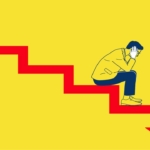


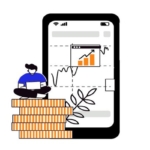


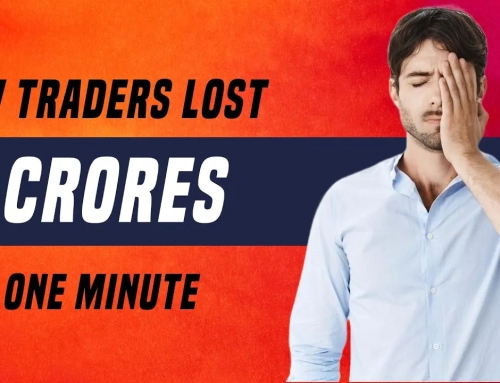
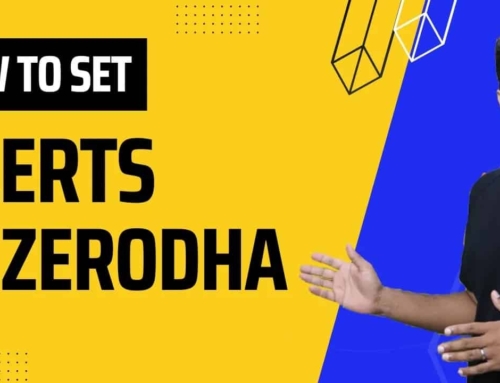
![What is Virtual Contract Note [Zerodha]](https://www.vrdnation.com/wp-content/uploads/2023/10/maxresdefault-virtual-note-500x383.jpg)
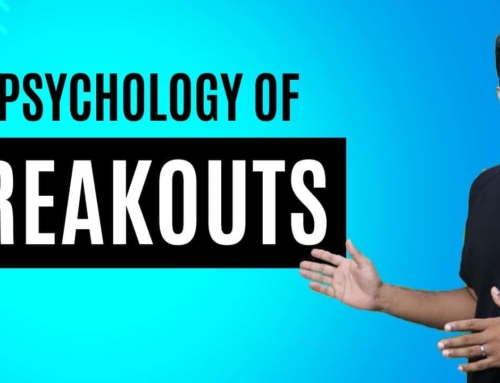


Leave A Comment